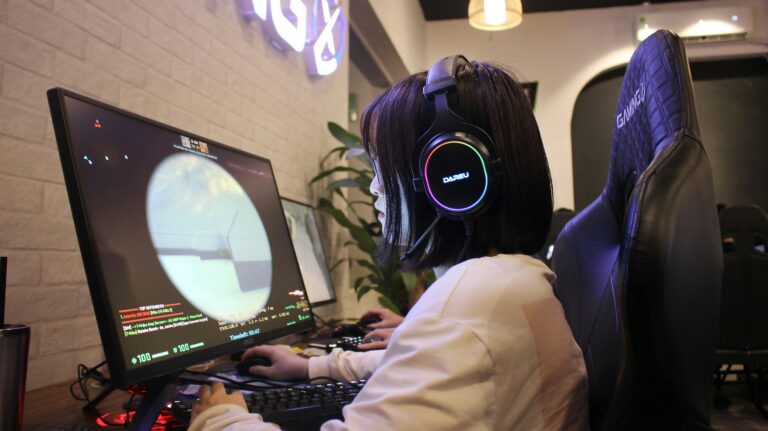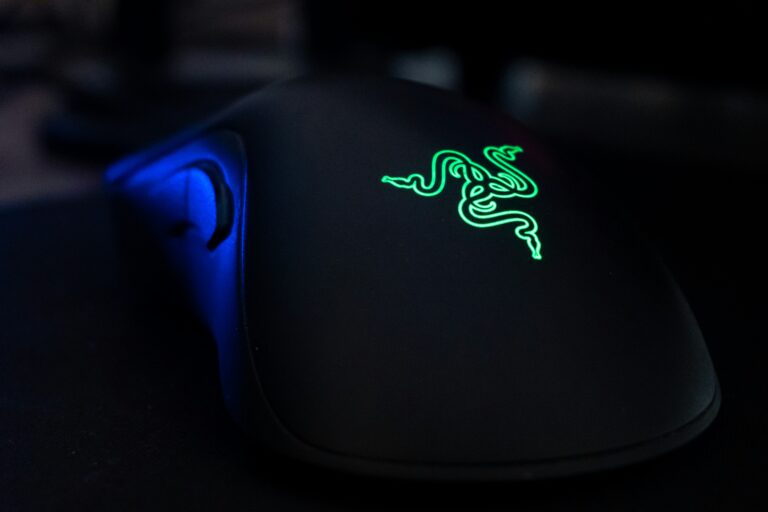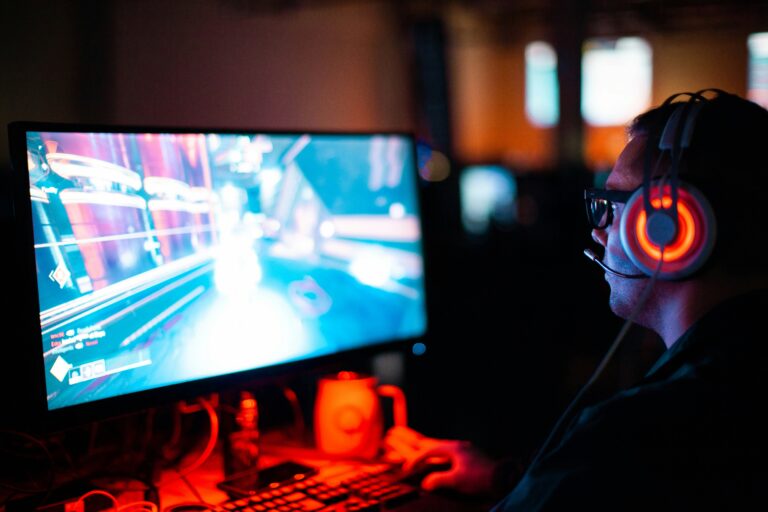A gaming keyboard is not just another accessory; it’s a tool that can directly impact how you play. From faster reaction times to more comfortable long sessions, the right keyboard can help you perform better and enjoy the game more. However, with so many models, features, and price ranges, choosing the ideal one can be overwhelming for beginners.
The good news is that you don’t have to be a tech expert to make the right choice. By learning the basics of what makes a gaming keyboard good—and how these factors relate to your playstyle—you can easily find one that fits your needs and budget.
In this step-by-step guide, we’ll break down everything you need to know to make an informed decision. You’ll learn how to pick the right type, size, switches, and features, as well as tips to maximize value for your money. Keep reading to discover how to choose the perfect gaming keyboard for your setup!
Understand the Different Types of Gaming Keyboards
The first step in choosing a gaming keyboard is understanding the two main types: mechanical and membrane.
- Mechanical Keyboards use individual mechanical switches for each key. They offer tactile feedback, durability, and faster response times. Gamers love them because they are precise and can handle intense use.
- Membrane Keyboards use pressure pads. They’re quieter, cheaper, and often have a softer feel. However, they wear out faster and lack the responsiveness of mechanical options.
For competitive gaming, mechanical keyboards are the standard. They last longer (often over 50 million keystrokes) and give you the edge in reaction-based games. For casual gaming or those on a tight budget, membrane keyboards are still a solid choice.
Popular examples:
- Mechanical: SteelSeries Apex Pro, Razer BlackWidow V4, Logitech G Pro X.
- Membrane: Razer Cynosa V2, Logitech G213, Corsair K55 RGB Pro.
Know the Different Switch Types
Once you choose a mechanical keyboard, you need to decide which switch type suits your style. Switches determine how each key feels, how much force you need to press, and how noisy they are.
Main types of switches:
- Linear (e.g., Cherry MX Red, Razer Red) – Smooth with no tactile bump. Best for fast-paced games like CS:GO and Valorant where quick reactions matter.
- Tactile (e.g., Cherry MX Brown, Logitech GX Brown) – Slight bump on actuation. Great for both gaming and typing. A versatile choice for beginners.
- Clicky (e.g., Cherry MX Blue, Razer Green) – Tactile bump plus a distinct click sound. Fun for typing but can be noisy in shared spaces.
Some brands, like Razer and Logitech, have their own switch variations, including optical switches, which use light for actuation and offer ultra-fast response times.
Consider the Keyboard Size
The size of your keyboard affects both comfort and desk space.
- Full-size: Includes all keys plus a numeric keypad. Good for gamers who also use their keyboard for work.
- Tenkeyless (TKL): Removes the number pad, saving space and allowing more mouse movement. Popular among FPS players.
- 60% Compact: Extremely small, removing function keys and arrows. Great for minimal setups and gamers who need maximum mouse room.
Which should you pick?
If you’re new to gaming, a TKL is a great middle ground—compact yet functional.
Look for Anti-Ghosting and N-Key Rollover
When gaming, pressing multiple keys at once is common, especially in games that require combos or fast reactions. Anti-ghosting ensures that every key press is registered correctly, while N-Key Rollover (NKRO) allows many keys to be pressed simultaneously without errors.
For competitive gaming, make sure your keyboard supports at least 6-key rollover or higher.
Check for Customization Options
Customization is one of the fun parts of choosing a gaming keyboard. Many models come with:
- RGB Lighting – Not just for looks, but also for setting profiles that highlight keys for specific games.
- Programmable Keys – Assign complex actions or macros for MMO and RTS games.
- Software Integration – Tools like Razer Synapse, Logitech G Hub, or Corsair iCUE allow deep customization.
While RGB doesn’t improve performance, it can make gaming more immersive.
Evaluate Build Quality and Durability
Build quality determines how long your keyboard lasts. Look for:
- Materials: Aluminum frames are strong and premium. High-quality plastic is also good.
- Keycaps: PBT keycaps are more durable than ABS, which can become shiny over time.
- Switch Lifespan: Most mechanical switches last over 50 million presses.
A solid build ensures your keyboard withstands long gaming sessions for years.
Consider Wired vs. Wireless Options
Wireless gaming keyboards have improved drastically, offering low-latency connections comparable to wired models. However, for competitive gaming, many still prefer wired options to avoid potential input delays.
Pros and cons:
- Wired: Stable, no charging required, cheaper.
- Wireless: Clean setup, portable, but needs charging.
If you go wireless, choose one with low-latency technology like Logitech Lightspeed or Razer Hyperspeed.
Set a Budget and Compare Models
Gaming keyboards range from budget-friendly to high-end. Setting a budget helps narrow down your options.
- Budget ($30–$60): Great entry-level membrane or basic mechanical options.
- Mid-range ($70–$120): Mechanical keyboards with customizable lighting and solid build.
- High-end ($150+): Premium switches, aluminum frames, advanced software, and wireless options.
Good value picks:
- Budget: Redragon K552, HyperX Alloy Core RGB.
- Mid-range: Corsair K70, SteelSeries Apex 5.
- High-end: Logitech G915, Razer Huntsman Elite.
Test Before You Buy (If Possible)
Whenever possible, try out keyboards at a store or borrow one from a friend. The feel of the switches, sound, and ergonomics are very personal preferences.
Things to check when testing:
- Key travel and feedback.
- Comfort during long typing/gaming sessions.
- Noise level (especially if you share the space).
Choose Based on Your Gaming Style
Your choice should ultimately reflect the games you play most:
- FPS (Call of Duty, Valorant): TKL or 60%, linear switches for speed.
- MMO (World of Warcraft, Final Fantasy XIV): Full-size with macro keys.
- Strategy/RTS (StarCraft II, Age of Empires): Tactile switches for precision and comfort.
- Casual Gaming: Choose what feels most comfortable and suits your budget.
Conclusion
Choosing the best gaming keyboard isn’t just about flashy lights or the most expensive brand. It’s about finding a balance between comfort, performance, and features that suit your gaming style. Whether you go for a budget-friendly option or a high-end mechanical beast, the right keyboard can elevate your gameplay and make every session more enjoyable.
Take the time to consider your needs, test options if you can, and invest in a model that will last. With the right keyboard, you’re not just pressing keys—you’re improving your entire gaming experience.
Frequently Asked Questions
1. Is a mechanical keyboard better for gaming than a membrane keyboard?
Yes, mechanical keyboards offer faster response times, better durability, and a superior feel, making them the preferred choice for most gamers.
2. Are wireless gaming keyboards good for competitive play?
Modern wireless models with low-latency technology perform just as well as wired keyboards, but they tend to be more expensive.
3. What’s the best switch type for beginners?
Tactile switches (e.g., Cherry MX Brown) are a great starting point because they balance gaming performance with typing comfort.
4. Do I need RGB lighting on my keyboard?
Not necessarily. It’s mostly for aesthetics, but it can also help highlight keys for specific games.
5. How much should I spend on my first gaming keyboard?
Between $70 and $100 is a sweet spot where you get good mechanical models with essential gaming features.



